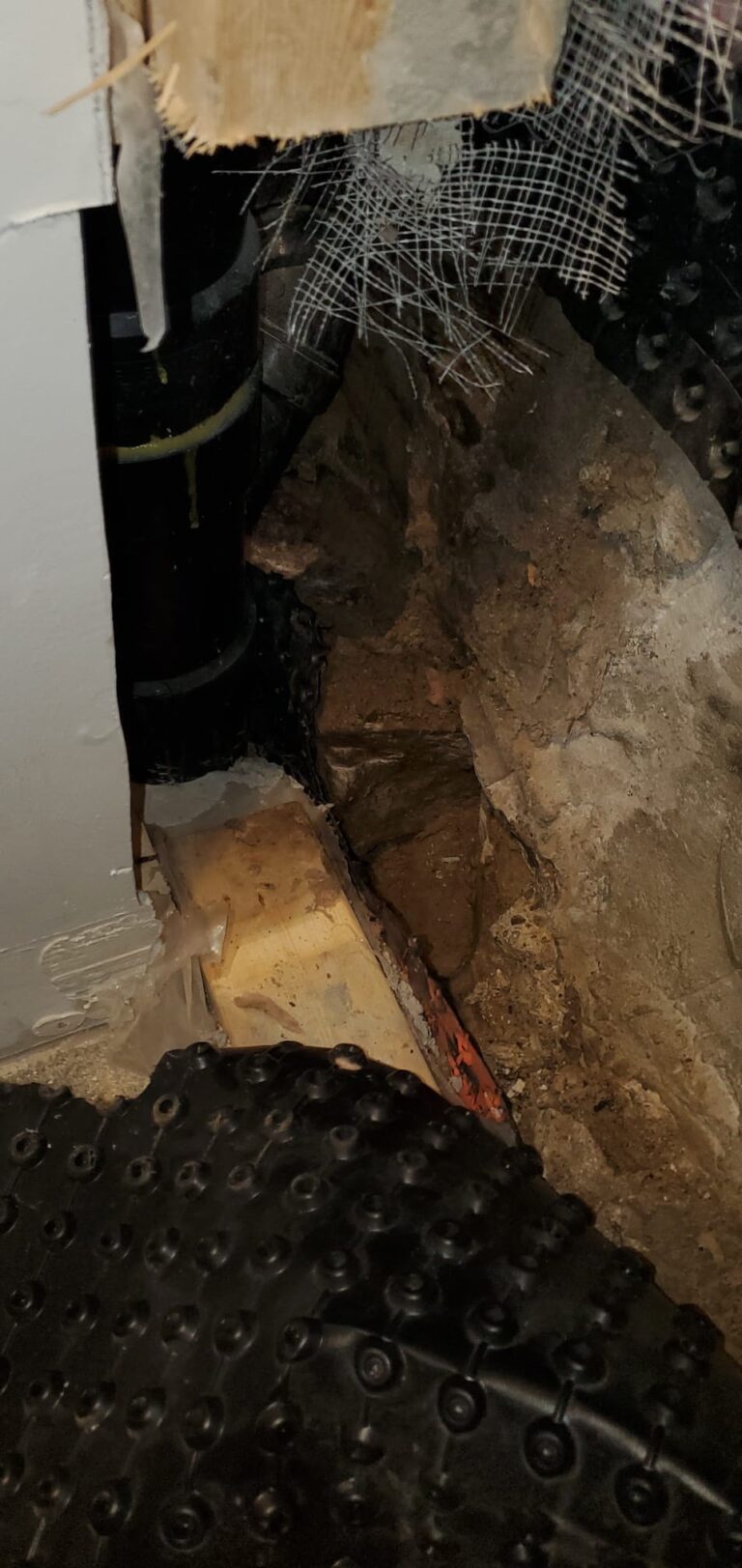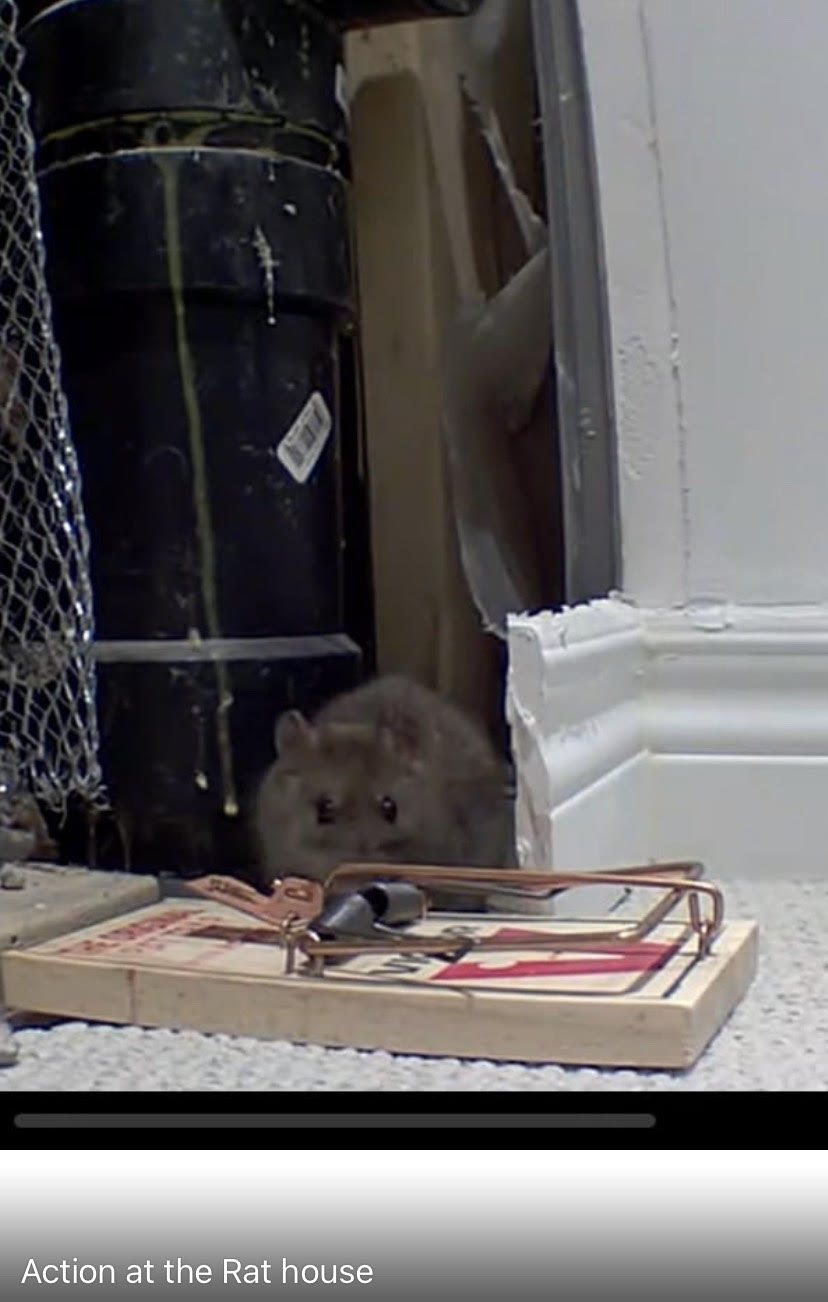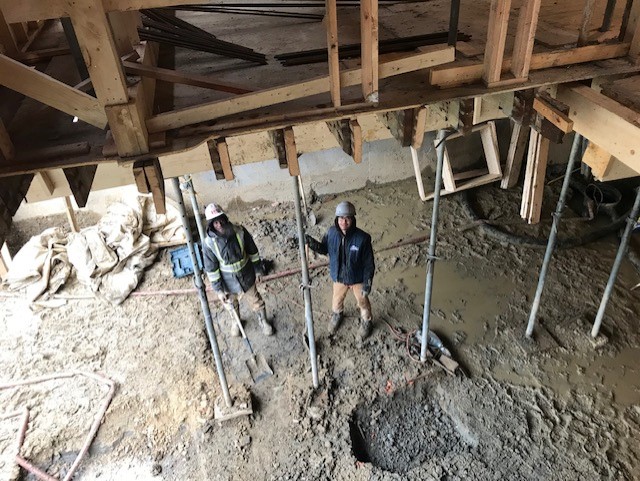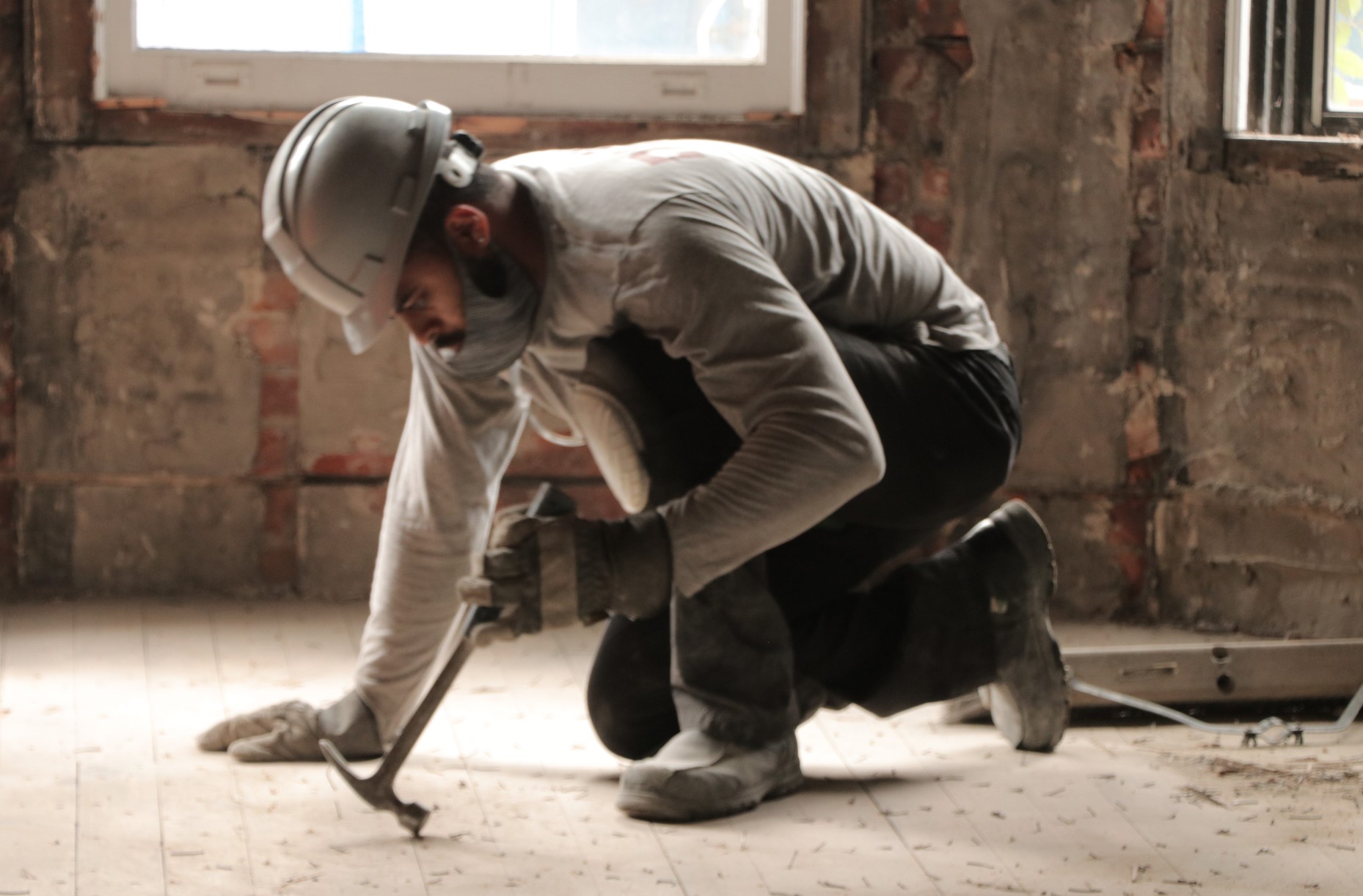In the past 4 months, Demo For Your Reno Inc. has eradicated rats from two Toronto homes. In each case, multiple pest control firms tried their best to address the issue by poisoning and trapping many rats, but they ultimately failed to eradicate the entire population. There always seemed to be more rats and even worse, an ever-present, ever-active population of rats.
Know thy enemy!
Rats prefer to hide and are nocturnal. If rats are seen during the day, it usually indicates a thriving rat population. Scratching sounds behind walls, in cupboards, or in closets and ceilings are strong indicators of rodent activity. You may also observe rat droppings, indicating a healthy, well-fed rat population.
Rats leave clues of their activity through erosion and accretion. Examples of erosion caused by rats are scratch or bite marks, and holes just slightly larger than a golf ball found in baseboards, walls, and window casings, while dirt or grease marks, droppings, urine stains, and smell indicate accretion from rat activity.
Rat runs are a nasty discovery as they indicate a high rat population. Rat runs or tracks can be found close to the ground in low vegetation or within another suitable cover for rat movement – well protected, dark, and isolated from other activity, especially that of predators. A wood pile is an excellent cover for a rat run.
A perfect spot for a rat nest is well hidden, warm, and dry and is usually further upgraded by the rats with debris harvested from their gnawing of wood, plastic, insulation, clothing, etc.
Rat Entrance

Infestation Status
Property #1
Walking the exterior of her home, our client detailed her exhaustive efforts to eliminate the rats from her home – plugging and parging the exterior masonry walls, fortifying areas with rodent-proof mesh, investigating below her deck for signs of rat runs or nests, inspecting the basement window casings and setting up a ‘rat cam’. Excellent work was evident in each case with no obvious signs of an active rat population.
Once we moved into the basement, however, we found abundant signs of recent rat activity. The client reported that the activity was isolated in the basement. We were perplexed, the exterior of the house was secure, and yet rats were active inside the house. Two pest control companies had attended the home, each killing many rats. In addition, the homeowner had stripped the drywall from the interior walls during an entire basement renovation and fortified the cavity behind the drywall with mesh, and then replaced the drywall.
Yet the smell of rat urine was potent and rat droppings were evident in isolated areas. How to solve this puzzle? We understood that the rats were coming into the house, but from where, since the exterior walls were cavity-free. Rats seek shelter and food, yet the homeowner reported there was no activity in her kitchen and the basement was free of food sources and spotlessly clean.
The smell and droppings indicated an active and large population of rats and to further prove the point, the client reported each of her family members frequently hearing scratching behind the drywall. There was no obvious entry point, no evidence of feeding in the house, and yet an obvious presence of rat activity. If there was no entry point, then the pest control companies should have killed off the rat population!
If there was no food in the house then the rats must have been feeding elsewhere and then returning to their nest in the house, yet we could not see any rat runs. Further discussing the history of the construction activity in the basement, I asked if the basement washroom had been relocated, and it had. Since abandoned pipe runs are a convenient ‘rat highway’, I asked if the old sewer pipes were removed and capped prior to replacing the basement slab. Unfortunately, the homeowner could not be certain that was the case.
The Game Plan
Starting in the area in which the rat activity was the loudest, we would work in intervals stripping back layer-by-layer until we found the rat’s entrance or eliminated that this area was not a rat entrance. In our absence, the homeowner would continue with trapping and ‘rat cam’ recordings.
Upon removing the drywall, we discovered that this area was indeed rat-central, as nests were discovered directly behind the radiator and tunnels in the fiberglass insulation along the length of the wall. Yet we did not find a rat entrance.
Abandoned sewer pipes were not found, a perfectly intact ABS stack pipe was visible along with layers of wire mesh parged in place. We found no evidence of rat activity in these areas. After removing the drywall and rat-soiled insulation, we elected to stop the first round of demolition activity there.
The next day the homeowner reported capturing a photo of one of the many rats to appear that night. Using footage, she was able to determine the spot the rats were coming and going from – behind the sewer stack where the new concrete slab was not completely sealed up to the foundation wall! Success! She was further able to identify a hole showing the tell-tale signs of rat activity – a tennis ball-sized hole disappearing below the concrete slab behind the sewer stack.
Upon our return, the client reported continued scratching noises. This time, the noise was coming from behind the basement wall plastic waterproof membrane. Indeed, when we looked closer, we found a circular hole gnawed by the rats through the plastic membrane directly behind the radiator.
Our next round of work would be to remove the waterproof membrane and investigate! And, also to fill the rat entrance with rat-proof material.
Once we removed the waterproof membrane, we discovered yet another ‘rat run’ – the rats had moved pounds of fiberglass insulation in between the waterproof membrane and the foundation wall to create a well-insulated ‘rat run’. Lacking fasteners, the waterproof membrane had lifted off the wall creating the opportunity for the rats to build a ‘rat run’ in the resulting gap behind the waterproof membrane and the foundation wall.
We followed the same procedure, removing all rat-soiled insulation from behind the waterproof membrane. We then returned to the rat entrance, which was relativity inaccessible. Since the hole is below the basement slab and behind the sewer stack and of an undetermined depth, we were keen to select a rat-proof material to permanently fill and seal the rat hole. While concrete is the obvious choice the size of the stone in the concrete would potentially jamb the hole and prevent the concrete from filling the hole completely. We elected to use non-shrink grout, a product that can be mixed in a flowable state and hardens within hours. Once we had the grout mixed, we added an additional ingredient to combat the rats.
Pouring the grout into the hole was no guarantee that it would travel into the depths of the hole as it might air-lock. To combat this, we used a vibrator. Astonishingly, we used 66 lbs (30 kg) of non-shrink grout and plunged the 4’ vibrator whip to a depth of 3.5’ to fill this single rat hole. To date, no rats have been spotted on the ‘rat cam’ since!
Access hole gnawed by the rats to access the rat run between the drywall and plastic waterproofing membrane.
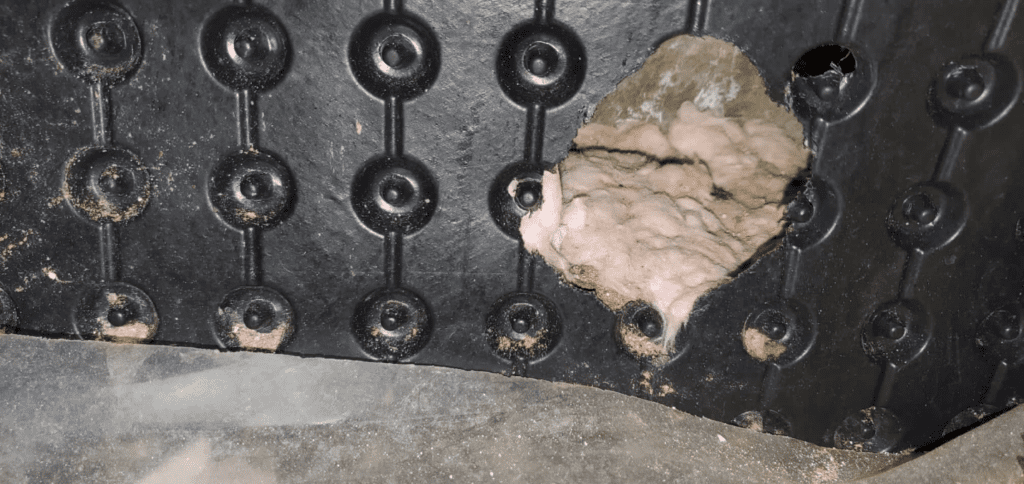
Property #2
Leading the way down the basement stairs, the client explained that the pest control companies had killed dozens of rats, but the infestation continued. The methods of the pest control companies were clear – large traps set in rat runs and rodent-proof mesh fastened to the foundation walls covering gaps around pipes and other foundation wall penetrations. In addition, groundwater was penetrating the foundation wall in different locations seeping through small crevasses. The basement foundation wall had a plastic waterproofing membrane behind the wood stud drywall wall and the client was unsure if an interior weeping tile was installed below the slab.
The Game Plan:
Determine the location of the ‘rat entrance’ and stop the inflow of groundwater. We planned to work in intervals stripping back layer by layer until we determined the location of the water seepage and identified any rat entrance holes.
We demolished the drywall and stud and stripped off the plastic waterproofing membrane. Surprisingly we found that the dry pack installed above the underpinning had not formed a complete seal to the underside of the footing. In another area of the underpinning, we found rigid styrofoam between the underpin and the underside of the footing allowing groundwater to seep into the basement interior.
Once we removed the wire mesh from around the pipe, we found that the stone around the pipe opened into a large cavity outside the footing. Finally, we demolished the concrete slab to uncover the area where we should find the weeping tile.
We removed the styrofoam and prepped the surface for non-shrink grout. We cleared out the loose gravel above the pipe and formed the face of the footing surrounding the pipe, placed non-shrink grout in each area, and sealed and plugged all groundwater seepage.
After two weeks, no rats were observed in the basement. Next, we reinstated the weeping tile, plastic waterproofing membrane, and concrete slab.
Photo from outside the radiator of rat hole entrance.
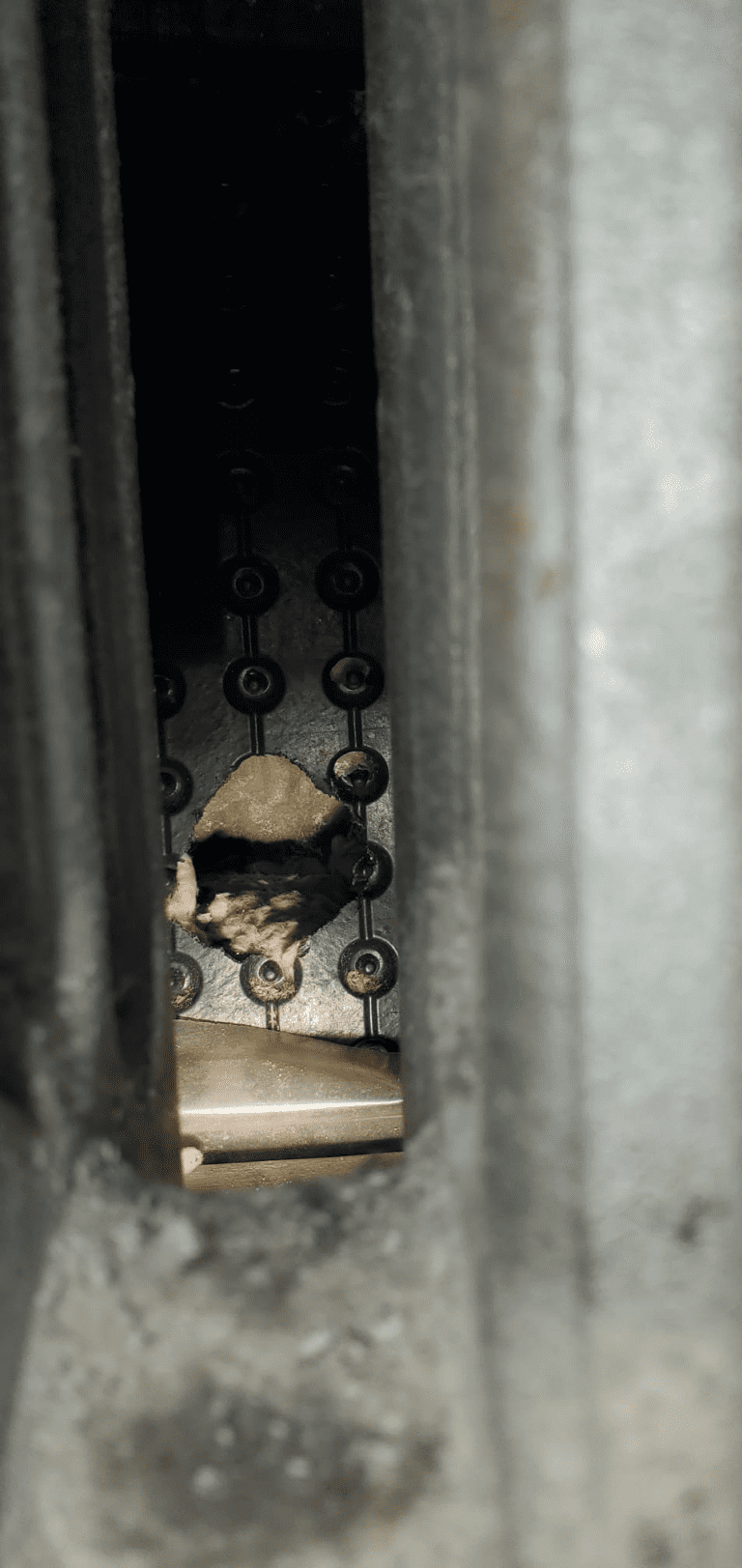
Rat Entrance Behind the Sewer Stack
